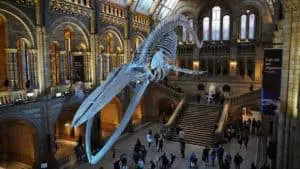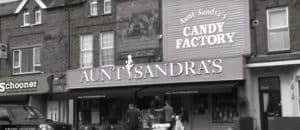The Rich Tapestry of Regional Irish Dance – Unravelling Cultural Threads
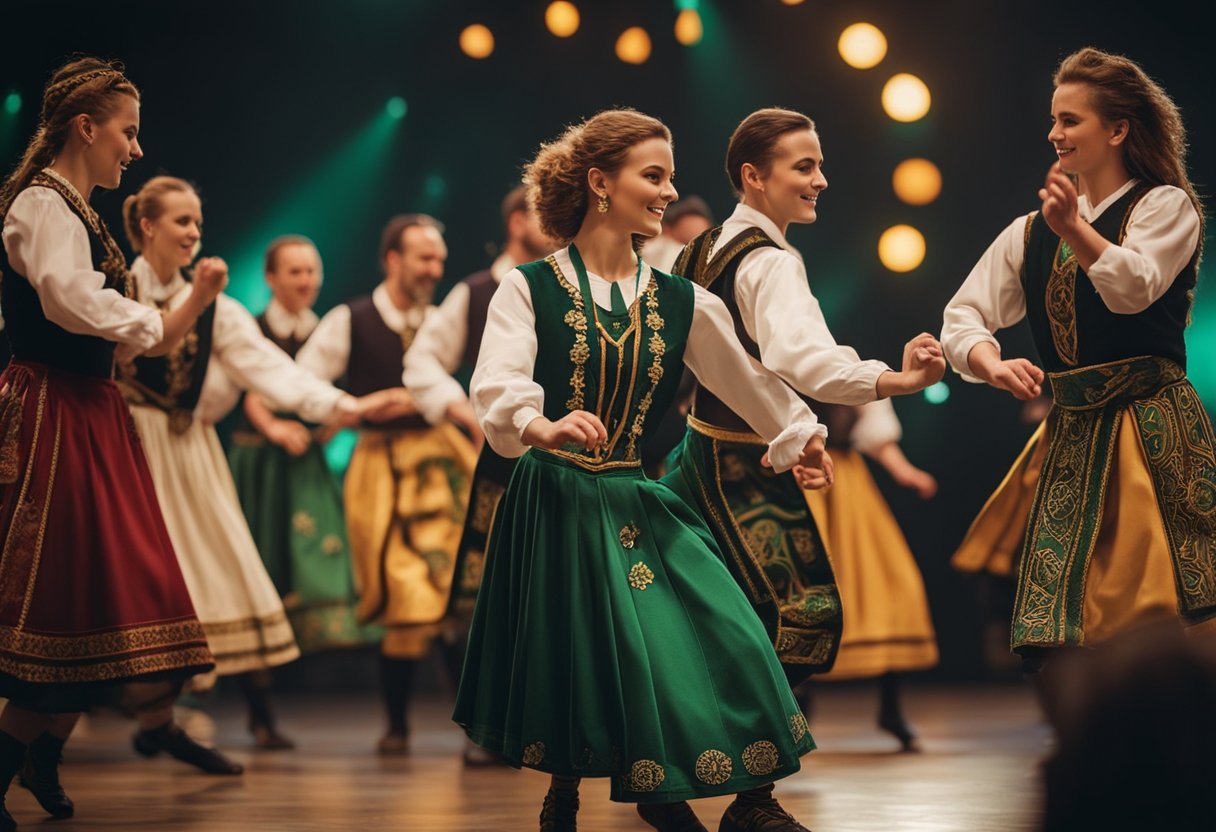
Updated On: April 16, 2024 by Maha Yassin
Regional Irish dance, a celebration of culture and tradition, has captivated audiences with its dynamic rhythms and intricate footwork. From the storytelling of ancient Gaelic roots through to contemporary interpretations, the evolution of Irish dance reflects the ongoing vitality of Ireland’s cultural heritage. As we explore the regional variations in style and technique, we uncover a rich tapestry woven from the threads of history, folklore, and community spirit that brings the narrative of Ireland’s journey to life.
The symbiosis between traditional Irish music and dance is a testament to the enduring legacy of this art form. Each step and melody is ingrained with emigration, triumph, and survival tales that resonate with the global Irish diaspora. The tapestry extends beyond the shores of Ireland, finding new forms and expressions as it influences dance cultures worldwide. We recognise the profound impact of iconic performances and shows that have propelled Irish dance onto the world stage, embodying both education and mastery. The attire, instruments, and social aspects integral to performance unite communities, celebrating dance’s shared joy and ability to unite people across different lands.
Origins of Irish Dance

In delving into the intricate fabric of Irish dance, we uncover a wealth of historical and cultural threads interwoven with the very essence of Ireland. Our journey through time reveals how dance has entertained and preserved the core elements of Irish heritage.
Roots in Irish History
Irish dance is a vivid tapestry, rich with history and shaped by the cultural identity of Ireland. It is a tradition steeped in antiquity, with its earliest manifestations thought to be linked to the Druids and ancient Celtic celebrations. Historical accounts suggest that as early as 500 BC, dance was integral to Irish life, featuring in both sacred and communal settings. The interplay of movement and traditional Irish music has remained a cornerstone of our cultural expressions, reflecting the stories and folklore of the Irish people through fluid steps and rhythmic precision.
Influence of Immigration and Famine
Irish dance also tells the story of resilience and transformation in adversity. The cataclysmic Great Famine and subsequent immigration waves of the 19th century had a profound effect on traditional dance. As Irish people settled in new lands, the dance evolved, absorbing influences from other cultures while maintaining its quintessential frameworks. The famine and hardships under British rule served not just as catalysts for physical migration but hybridisation of our traditions. Even in the most trying times, dance remained a steadfast symbol of Irish identity, an immutable link to rural Ireland and our ancestral past.
Cultural Significance

Irish dance is a dynamic form of artistic expression that embodies Ireland’s rich cultural heritage and reflects the unity and emotional resonance within the community.
Role in Irish Society
We recognise Irish dance as more than just an entertaining performance—it’s an integral thread in the fabric of Irish culture. It serves as a touchstone for cultural identity, uniting communities through shared experiences and traditions. The dance form is deeply intertwined with societal functions, from local feiseanna to family gatherings, promoting cohesion amongst friends and broader society. Every step and rhythm shows a story of Ireland’s history and a reaffirmation of the Irish identity.
From Local to Global Recognition
What started as traditional community entertainment has now found global recognition, largely propelled by phenomena such as Riverdance. This spectacular showcase of talent and passion has significantly amplified the global interest and love for Irish dance, drawing support across continents. As our friends in Irish dance troupes step onto international stages, they carry with them our culture, exhibiting both the unity of the Irish and the community support that has always fuelled their artistry. Through this worldwide appreciation, Irish dance continues to enhance its cultural significance, solidifying its place as a central feature of Ireland’s rich cultural tapestry.
Music and Dance Symbiosis

The symbiotic relationship between music and movement is foundational in the intricate world of Irish dance. We see it in the effortless way a dancer’s steps are timed to the pulse of the melody, asserting that one cannot truly shine without the other.
Irish Music’s Influence on Dance
In Irish culture, music isn’t just a backdrop to dance; it’s the heart that drives the rhythm of the steps. Take, for example, the global phenomenon Riverdance; it is a vibrant testament to this interdependence. The fiddle’s lively strings, classic to traditional Irish music, set a pace that dancers mirror with precision, weaving a narrative that is as audibly rich as it is visually stunning. Whether in soft shoe or hard shoe, the dancers’ steps are often complicated conversations with the instruments, echoing each other’s cadence.
Instruments and Rhythms
Each contributes uniquely to the dance when we examine the assortment of instruments like the fiddle, uilleann pipes, and harp. The fiddle provides swift melodies that often dictate the dancer’s speed, while the uilleann pipes bring a haunting depth that matches the fluidity of soft shoe performances. Rhythms from bodhráns and tin whistle bear a distinct nature; the bodhrán’s beat mimics the heartbeat of Irish dance, and the tin whistle’s clear tones cut through, leading the dancers in a spirited jig. The concertina, with its full-bodied sound, often underpins the collective rhythms, creating a harmonic foundation for choreography. It’s this orchestration of rhythms and melodies from a cadre of musicians that shapes the structure within which Irish dancers flourish.
Evolution of Dance Styles
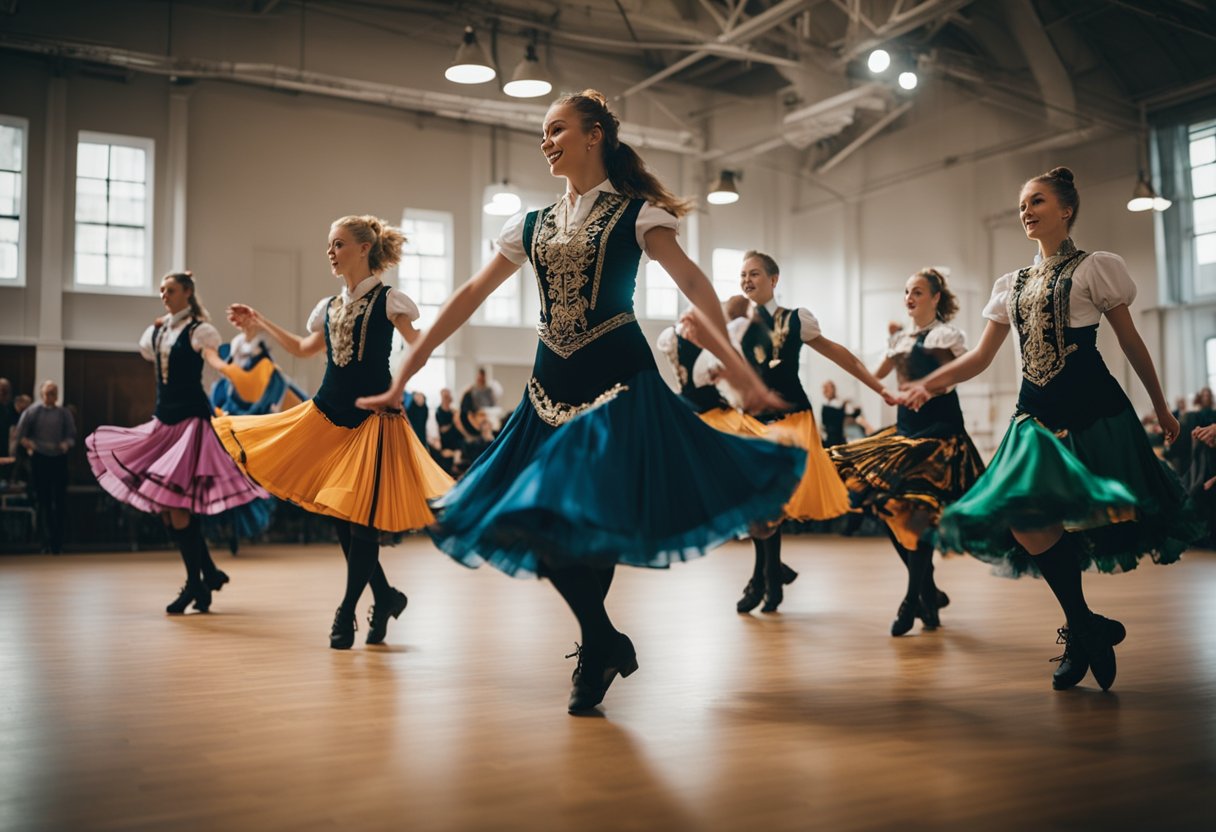
In this exploration of Irish dance, we survey the transformation from cherished traditional forms to dynamic contemporary innovations. Irish dance has not only preserved its historical roots but has also seen a flourish of creativity that has carried it onto the global stage.
Traditional Forms
Traditionally, Irish dance includes various styles, such as the jig and reel. These forms are grounded in a rhythmical precision where step dancers perform intricate choreography using hard shoes for percussion and ghillies for more fluid movements. Sean-nós, an older, more improvised form of solo Irish dancing, is characterised by its lower-to-the-ground movements and an expressive, relaxed upper body, contrasting with the more rigid form of Irish step dancing.
The céilí dances are another cornerstone, with groups performing sequences passed down through generations, preserving the communal aspect of Irish culture. Each dance tells a tale, reflecting aspects of Irish life and the values of its people. The precise footwork and formations in jigs and reels are executed with a vigour that captures the essence of traditional Irish dance.
Contemporary Innovations
Innovations in Irish dance have arisen through the creative visions of dancers and creative directors who push the boundaries while respecting the legacy of traditional Irish dance. Contemporary interpretations balance the historical facets with new influences, integrating diverse dance forms to reinvent Irish dance for a modern audience.
These modern renditions still utilise intricate choreography but often fuse it with contemporary music and theatrical elements. Dancers clad in updated costumes carry the traditional hard shoe rhythms into experimental terrains, blending the formality of classic steps with expressive, storytelling movements that resonate with global audiences. Such innovation has helped Irish dance to step confidently onto the world stage, celebrating its heritage while embracing a fresh, global perspective.
Iconic Performances and Shows
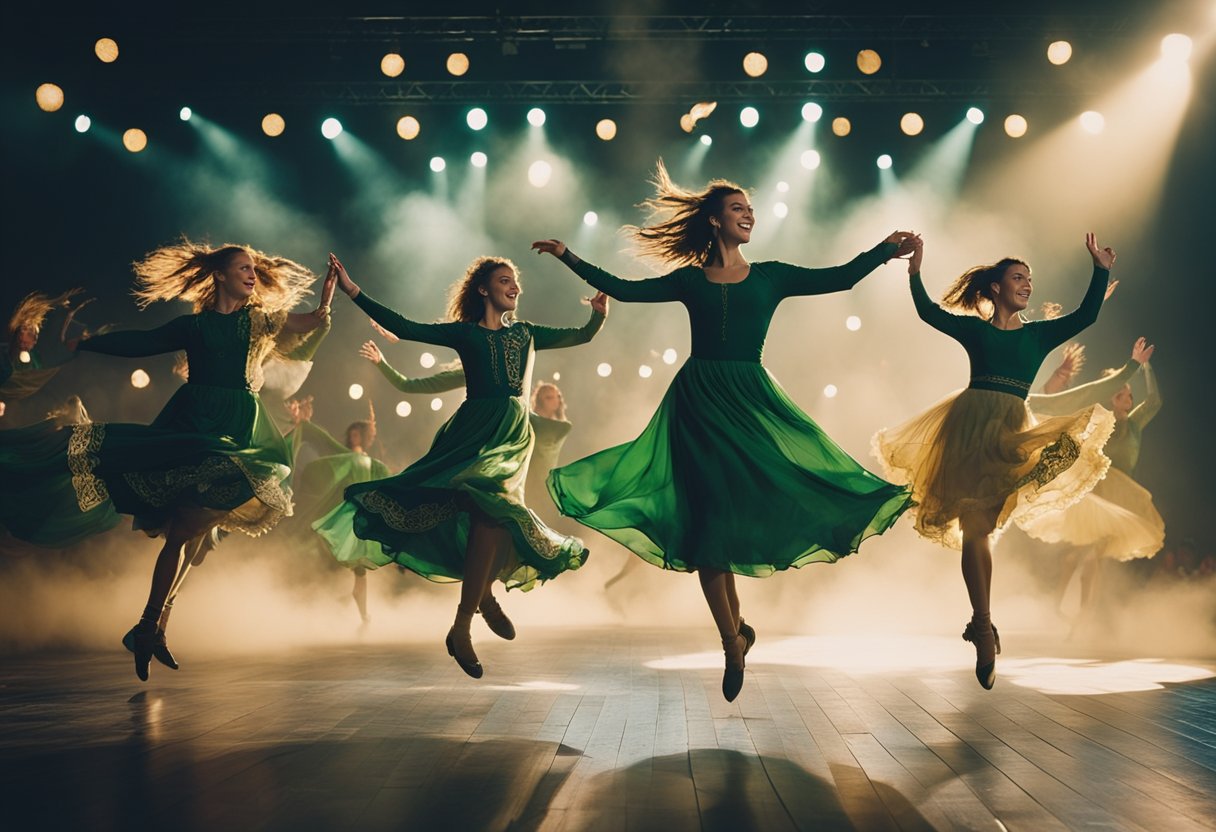
In this section, we explore the remarkable shows and individuals that have shaped the landscape of regional Irish dance, bringing its vibrant tradition to the global stage.
Riverdance and Its Legacy
Riverdance began as an interval performance act during the 1994 Eurovision Song Contest and quickly became an international sensation. The show, featuring the brilliant compositions of Bill Whelan, was noteworthy for its innovative blend of traditional Irish dance with modern choreography. Its worldwide success can be attributed to the compelling rhythms and award-winning performances and the show’s ability to tell the story of Irish dance through powerful staging and costumes.
Michael Flatley and Jean Butler were the initial stars who translated Riverdance’s vision into breathtaking performances. Flatley, also known as the show’s first choreographer and creative director, played a pivotal role in propelling Riverdance to fame, while Butler’s elegance and skill captured the hearts of audiences. Together, they helped establish Riverdance as a treasured cultural phenomenon, leaving an indelible mark and a significant legacy on the dance world.
Prominent Figures in Irish Dance
Throughout Riverdance and beyond, figures like Michael Flatley have stood out as luminaries in Irish dance. Flatley’s assertive style and entrepreneurial spirit saw him take on roles as a director and producer, pushing the boundaries of Irish dance shows following his departure from Riverdance. His productions maintained the essence of Irish culture while elevating it to spectacular new heights on the global stage.
Meanwhile, the cohesiveness and flow of these productions owe much to unsung heroes like the concertina players, whose melodies intertwine seamlessly with the dancers’ steps, and to the costume designers whose creations are intrinsic to the visual storytelling. These integral elements come together under the guidance of skilled directors and creative directors, ensuring that each performance resonates with the authenticity and passion of Irish dance.
Through our collective efforts, we at Connolly Cove proudly celebrate and champion the iconic performances and shows highlighting the intricate tapestry of regional Irish dance. Our venture into realms beyond Ireland’s shores has only deepened our appreciation for the universal language of dance and the stories it tells across cultures.
Education and Mastery
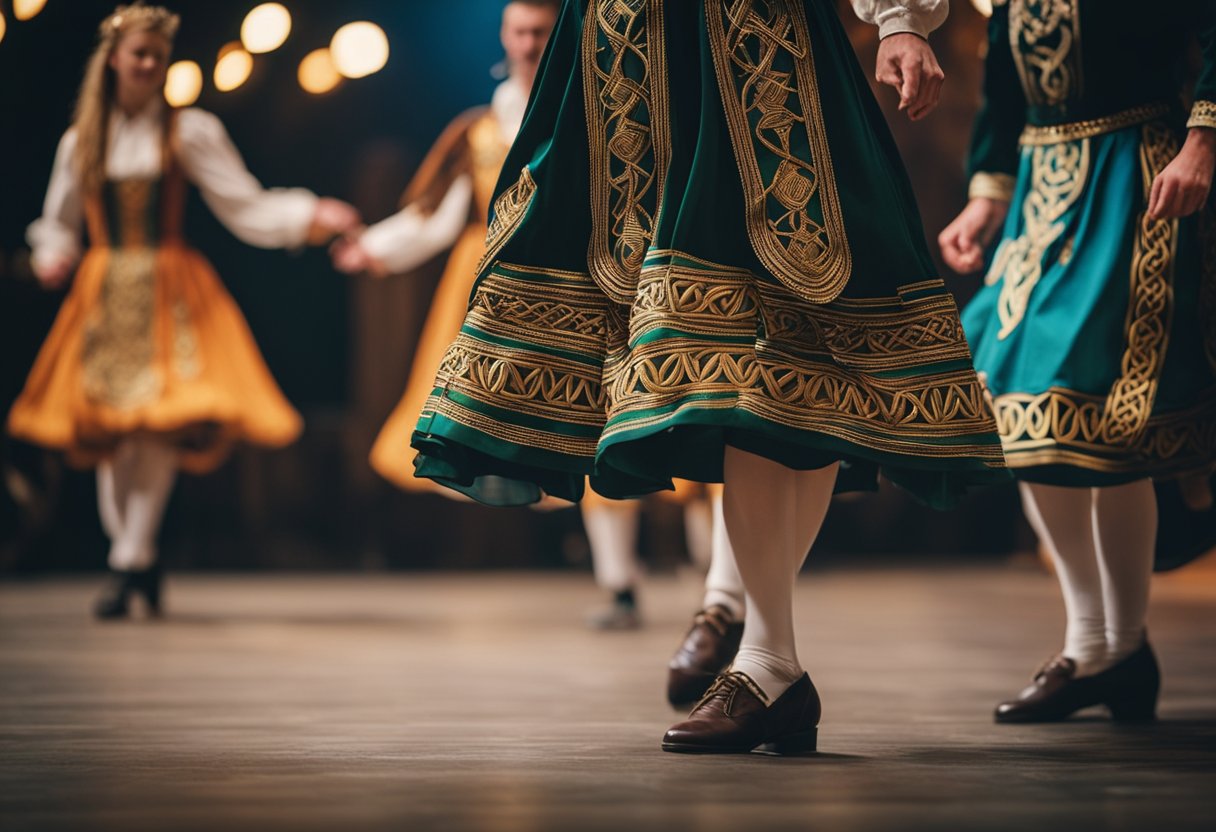
In Irish dance, education and mastery are pivotal to preserving the rich tapestry of this cultural expression. Through dedicated learning and ongoing practice, dancers achieve excellence in the traditional step dance and participate in esteemed events such as dance schools and feiseanna.
Learning Traditional Step Dance
We recognise that the foundation of any dancer’s journey begins with the intricate steps of traditional Irish dance. In regions where Irish culture thrives, such as Dublin and Appalachia, dance traditions are passed down through generations, often at local dance schools. These establishments offer education and the wisdom of dance masters—key figures who embody the heritage and technique necessary for students to excel.
Dancers often engage in workshops to refine their skills, learning the precise movements characteristic of each regional style. Dublin Irish Dance provides a fine example of how traditional steps are not only taught but also artfully combined with storytelling, as seen in productions like “Stepping Out”.
Dance Schools and Feiseanna
Dance schools play a crucial role; they are the nurseries of tradition and skill, moulding novices into adept performers. We notice a trend among these institutions to emphasise individual prowess and group dynamics, as the energy of a collective performance often defines the spirit of an Irish dance competition.
Feiseanna (dance competitions) are the stages where education and mastery are showcased. Competitors from various schools come together, representing their regions with pride, and display their finesse in hopes of clinching titles and accolades. The Irish Centre, known for its commitment to cultural experiences, has seen many dancers embark on their careers through victories at these prestigious gatherings.
In both schools and feiseanna, it is clear that excellence isn’t merely a destination—it’s a continuous quest. Our dedication to fostering new generations of Irish dancers ensures that the legacy of this beautiful art form endures.
Dance Attires and Instruments
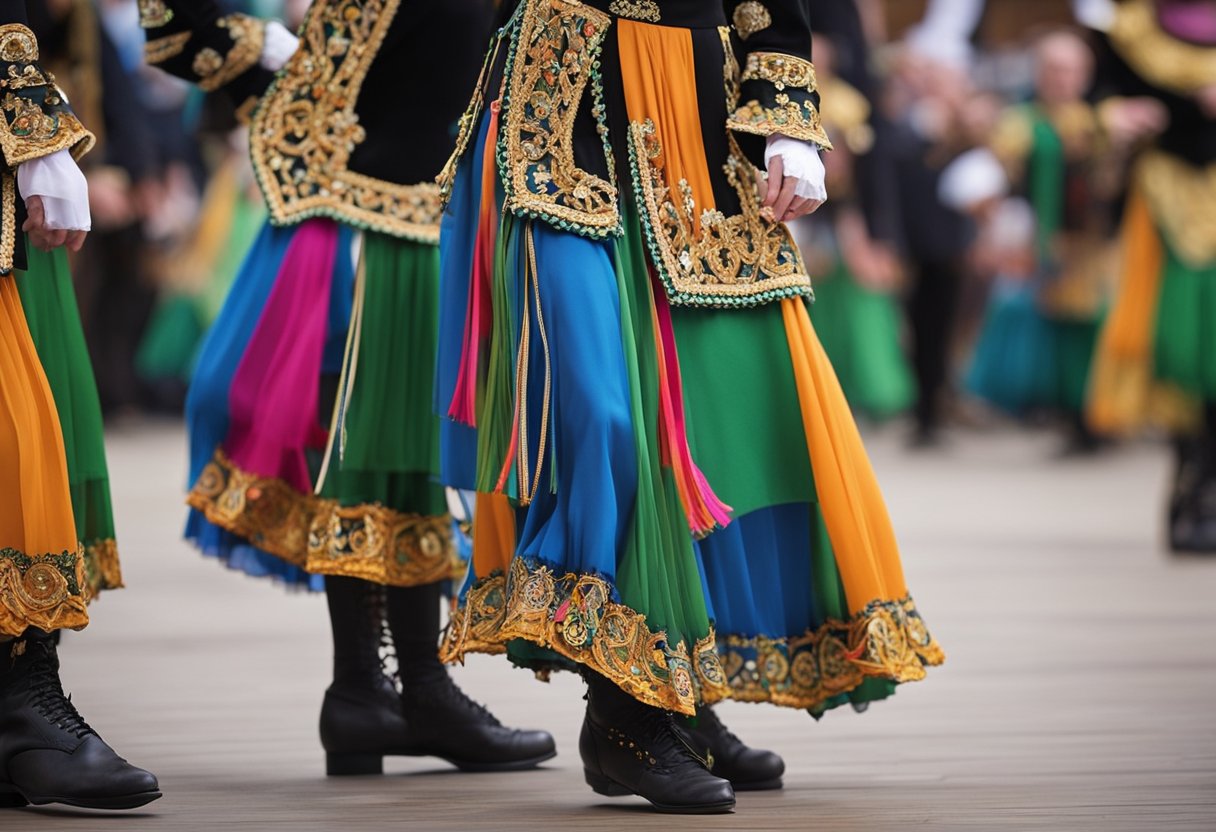
In the lively world of regional Irish dance, distinct attires and instruments play pivotal roles. They are not just accessories but integral parts of the tradition, enhancing performances and connecting us to Ireland’s rich history.
Dance Costumes and Shoes
The costumes in Irish dance, notably during performances, display a tapestry of Irish heritage. Woven with Celtic designs, performance attire typically consists of elaborately embroidered dresses for female dancers and vests for male dancers. The materials and patterns reflect traditional designs, often personalised to represent the dancer’s school or region. Footwear is also specific to the dance style: reel shoes for males are characterised by their sturdy build and heels that produce audible rhythms, while female dancers often wear soft, lace-up ghillies, which are similar to ballet pumps and allow for intricate footwork.
Musical Instruments Influence
Traditional music plays a significant role in Irish dance, creating a rhythmic foundation for the intricate steps. The fiddle is a mainstay, producing lively, melodic tunes that often dictate the dance tempo. Not to be outdone, the uilleann pipes, recognised for their distinctive, haunting sound, are also central to the traditions of Irish music and dance. Meanwhile, the bodhrán, a traditional Irish drum, lends a deep, resonant beat that harmonises with the dancers’ steps. These instruments are not mere background; they actively shape the choreography and spirit of the dance.
Community and Social Aspects

In the rich landscape of regional Irish dance, the community and social gatherings form the vibrant backdrop against which the tradition thrives. We explore the cultural significance of these aspects, which have been instrumental in maintaining the unity and cultural glue among the Irish.
Social Gatherings and Céilithe
Irish dance is more than just a performance art; it’s an integral part of social gatherings, particularly céilithe, where community members come together. Traditionally, céilithe serve as pivotal social events, offering a place for friends and neighbours to connect through dance. Often held in rural Ireland, these gatherings are replete with music, laughter and the shared joy of stepping out in unison.
- Festivals: Irish dance festivals frequently feature céilithe as cornerstone events.
- Venues: Social halls and community centres are common venues for these vibrant dances.
- Inclusion: Regardless of age or skill level, everyone is encouraged to join in, fostering a sense of unity.
Dance as a Cultural Glue
The role of Irish dance in binding the community cannot be overstated. Its cultural significance is deeply felt, with each step and rhythm encapsulating the spirit of Ireland. This cultural glue extends beyond Irish shores, reaching out to places like America and Canada, where Irish diaspora communities use dance to forge and strengthen their bonds with Ireland. It’s not uncommon to see the tradition of dance passed down through generations, preserving and reinforcing the cultural identity of the Irish around the world.
- Cultural significance: A symbol of Irish identity in Ireland and the diaspora.
- Interaction: Dance facilitates interaction across generations, sustaining cultural continuity.
- Connection: Through shared cultural expression, Irish dance keeps the spirit of Ireland alive globally.
Influence of Irish Dance Worldwide
Irish dance has transcended its traditional boundaries, becoming a vibrant and celebrated part of dance culture across the globe.
Irish Dance in the New World
The migration of Irish communities played a pivotal role in seeding Irish dance traditions in the Americas. Today, cities like New York and Boston are deeply connected to Irish cultural expressions. Not merely a nostalgic nod to their roots, Irish dance in these regions evolves, integrating with local cultural nuances. In Canada, Irish dance schools flourish, reflecting the country’s appreciation and fostering of cultural diversity.
- Ireland to America: Pioneered by the Irish diaspora, Irish dance finds a new world home.
- Dance Evolution: A fusion with American and Canadian styles, expanding traditional boundaries.
Global Competitions and Festivals
Irish dance festivals and competitions represent a nexus of tradition and community. Originally hosted in Dublin, the World Irish Dancing Championships now captivate audiences worldwide, typifying how Irish culture has permeated international borders. Festivals combine Irish music and dance, showcasing the genre’s reach. Internationally renowned productions like Celtic Woman have contributed to the increased interest and participation in Irish dance competitions, further solidifying the dance form’s global stature.
- International Stage: A showcase for the global magnitude of Irish dance competitions.
- Cultural Celebrations: Festivals blending music and dance, strengthening the worldwide Irish community.
The Future of Irish Dance

As we look towards the horizon, the future of Irish dance promises a fascinating blend of innovation and an enduring respect for tradition. With its deep roots and global recognition, Irish dance is poised for an exciting evolution.
Innovations and Trends
Irish dance is witnessing a wave of creative innovation, with new choreography incorporating contemporary influences while maintaining the essence of traditional steps. The remarkable success of shows like Riverdance has inspired a new generation of step dancers who aspire to push boundaries. Dance troupes are now collaborating with artists from various genres, leading to an eclectic mix of artistic expression. As a result, we’re seeing an upsurge in dance forms that reflect a revival of interest in cultural dances from regions across Ireland, infused with a modern twist that appeals to today’s audiences.
Preserving the Essence While Evolving
In maintaining the legacy of Irish dance, the role of culture and tradition remains paramount. We, as enthusiasts and guardians of this art form, support the emphasis on preserving the original spirit that defines Irish dance. At the same time, there’s a recognition of the need for evolution in the art’s expression. We, including creative directors and supporters, aim to honour the past while embracing change. This balance ensures a rich, dynamic future for Irish dance, enabling it to resonate with global audiences while holding fast to its core identity.
Frequently Asked Questions

This section addresses some of the most commonly asked questions about the rich tradition of regional Irish dance, from its iconic styles to the cultural significance behind the movements.
What is the most renowned style of Irish dance?
The step dance, particularly the solo dance form popularised by shows like Riverdance, is the most renowned style of Irish dance. It is celebrated for its quick, precise footwork and dynamic rhythms.
For what reason do Irish dancers maintain straight arms during performances?
Irish dancers traditionally keep their arms straight and by their sides during performances to highlight the intricate footwork and to adhere to the cultural norms of modesty established during the dance’s development.
What are the three principal varieties of Irish dancing?
The three principal forms are step dancing, ceili dancing, which involves groups and is more social, and set dancing, which is similar to square dancing and is performed in quadrilles.
Could you explain the symbolic meaning behind Irish dancing?
Irish dancing is more than just a form of entertainment; it is laden with symbolism, representing the stories and emotions of the Irish people. The dances often narrate tales of Irish history and showcase the resilience and vibrancy of their culture.
How has regional Irish dance contributed to Ireland’s cultural heritage?
Regional Irish dance has been pivotal in preserving the unique identity of various Irish communities. Each region in Ireland may have its distinct steps and styles, contributing to a tapestry of cultural expression integral to Ireland’s heritage.
What are the traditional costumes associated with regional Irish dance?
Traditional costumes are often hand-embroidered and include elements such as the Tara brooch, symbolising Irish heritage. Ladies typically wear dresses, while gentlemen don dress pants and shirts featuring regional variations in their design.


